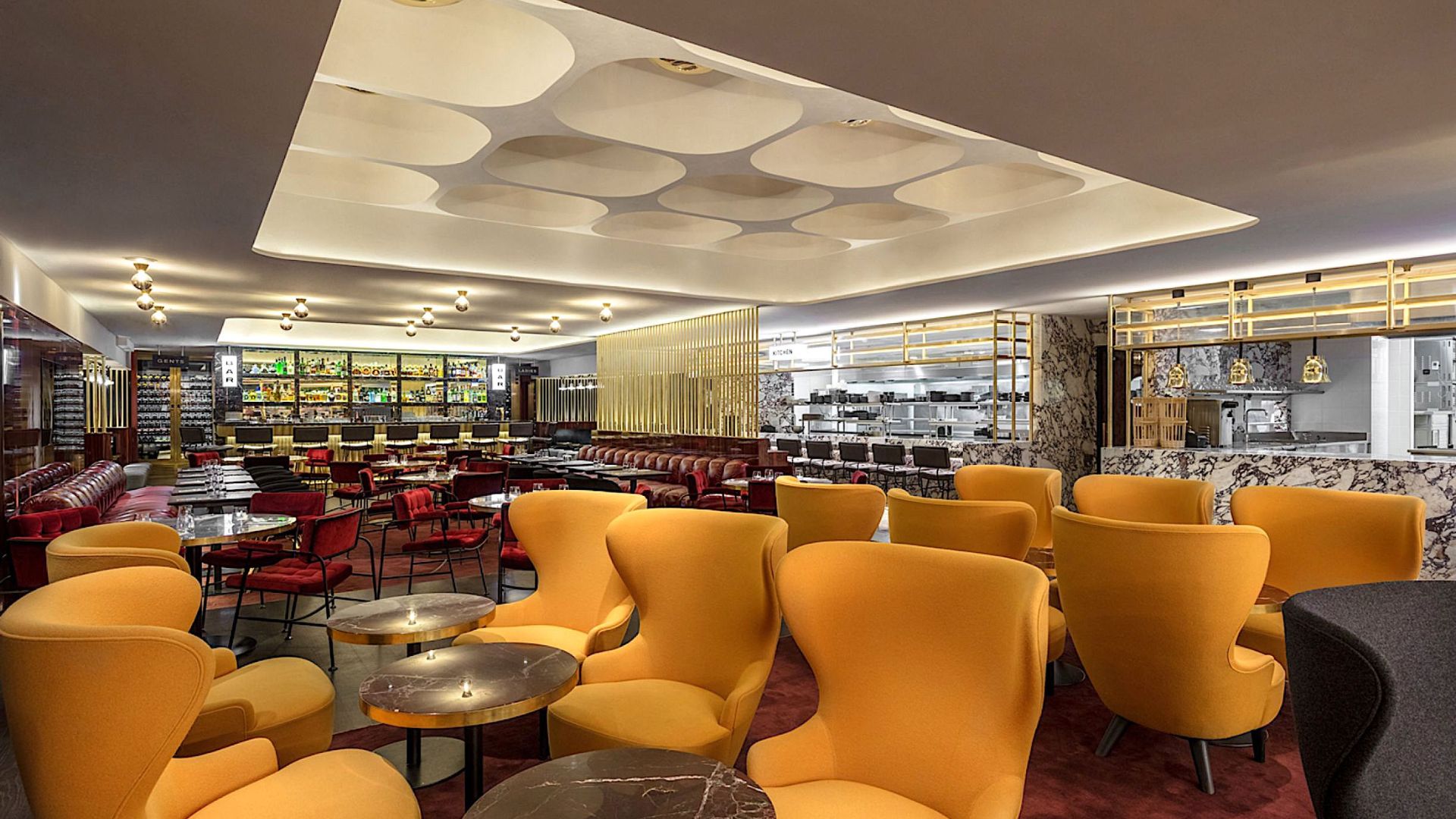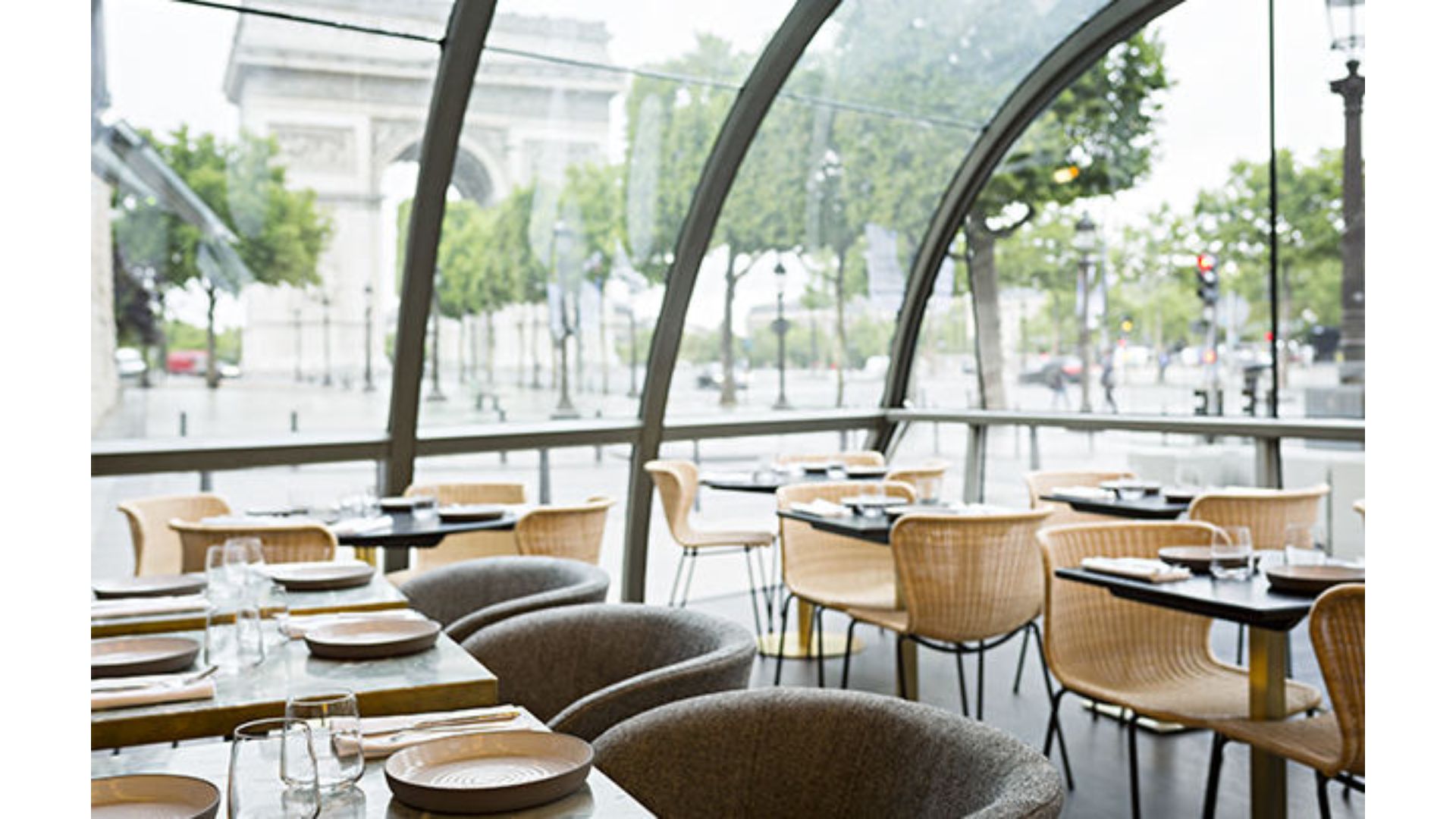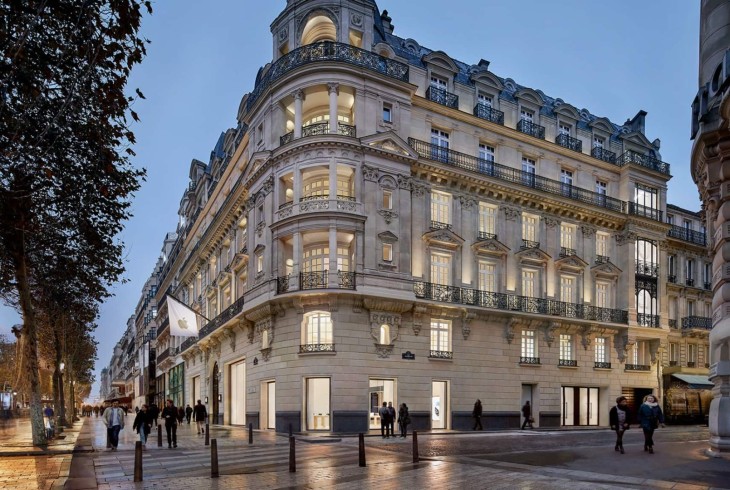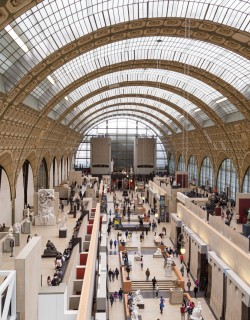Shopping, dining, strolling, seeing and being seen. There’s everything you want on the Champs-Elysées!
Au soleil, sous la pluie, à midi ou à minuit, il y a tout ce que vous voulez aux Champs-Elysées In the sun, in the rain, at noon or at midnight, there’s everything you want on the Champs-Elysées
This line from the 1970s smash hit – with a catchy tune! – by American-French singer Joe Dassin captures the broad, bright spirit of a place where everything seems possible. Today we’re ambling up the chic street, with a few delightful detours into other alluring avenues in the area. Keep in mind that the Champs-Elysées is nearly 2 kilometers long and is a sensational 70 meters wide, including the sidewalks on both sides, which are 20 meters wide – each! – so leave plenty of time for your tootle!
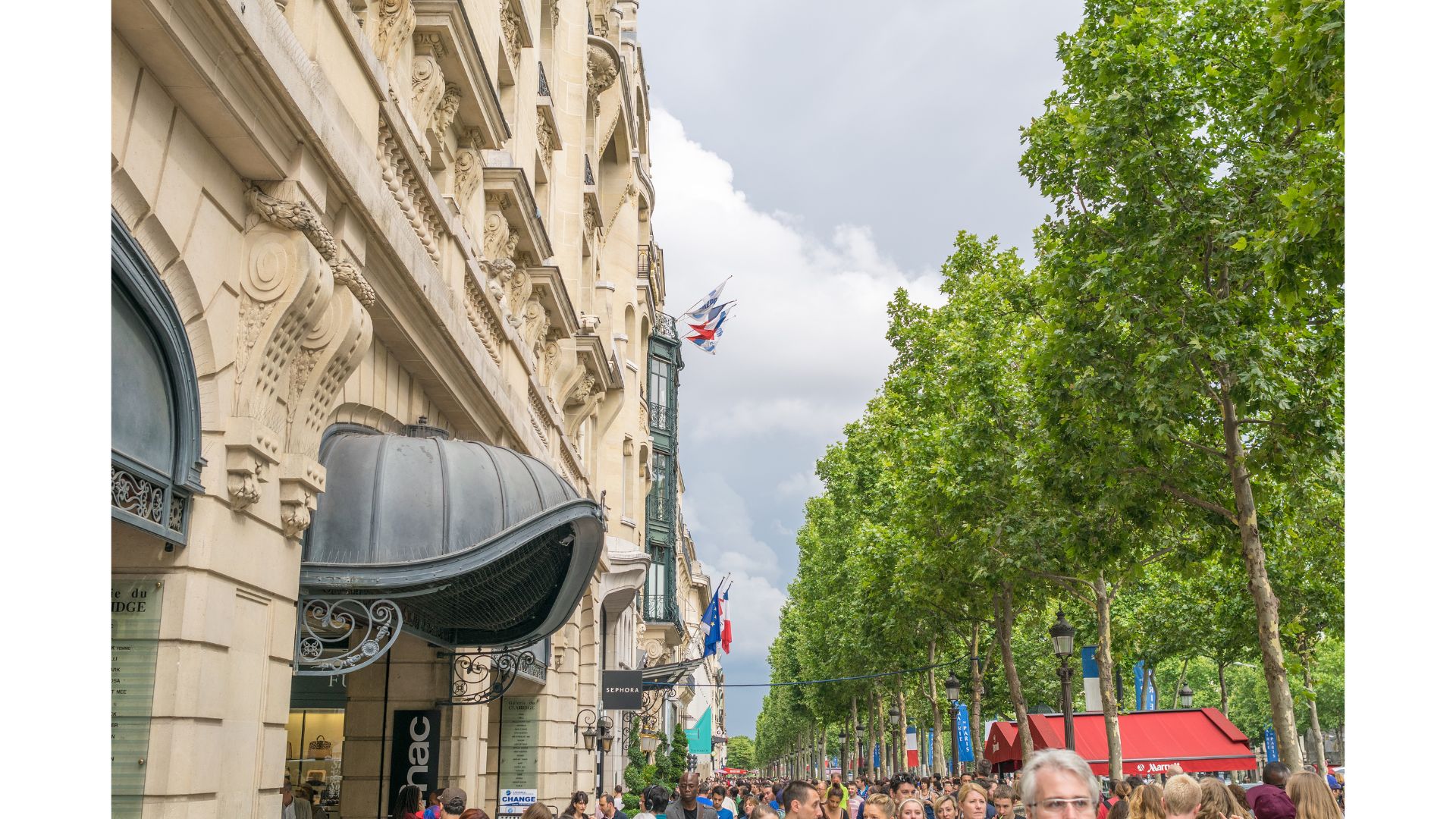
A grand throughfare leading northwest from the Tuileries Gardens toward the city gates was first commissioned by Maria de’ Medici (of the powerful Florentine family), queen to King Henry IV. The elm- and linden-lined lane was opened in 1616. Sixty years later, King Louis XIV refashioned the street, making it grander and more glorious. It was a statement: this was the way to one of the king’s preferred country getaways at Saint-Germain-en-Laye, and especially to the glamorously glittering court at Versailles. The first reference to the grand boulevard as Champs-Elysées appeared in 1694, referencing the place in the underworld where the souls of the Righteous lazed about in quiet contemplation and philosophical discourse.
Such contemplation and discourse would be somewhat challenging today. There’s too much going on here for quiet and philosophical! The Avenue des Champs-Elysées begins at the northwest end of the Tuileries Gardens with the Place de la Concorde. The square has born a number of names, reflecting the power and politics of various times. Of the 2,498 Parisian heads that rolled off the guillotine during the Revolution, 1,119 did so off the contraption set up here in the then-named Place de la Revolution, most notably those of Louis XVI, Marie-Antoinette, Philippe d'Orléans, Madame du Barry, and Danton. Its current name was given by the Directorate following the execution of Robespierre, the architect of the Terror, as a symbol of the reconciliation that the new more moderate Revolutionary government hoped to bring about among France’s feuding factions.
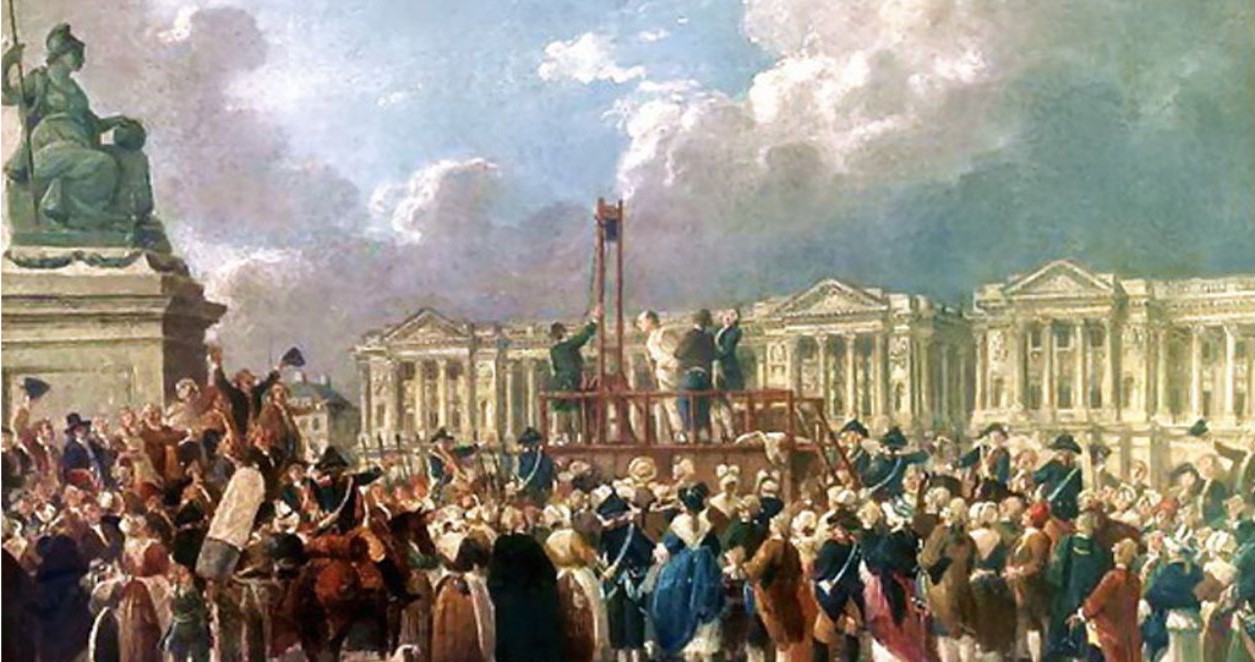
At the center of the square is the distinctive obelisk, an 1831 gift from the ottoman viceroy of Egypt to King Louis-Philippe in recognition of a series of trade deals established between the two nations. One of the c. 1300 BCE obelisks stationed at the entrance to the Temple of Luxor in ancient Thebes, it arrived in Paris two years later and in 1836 was erected to the great acclaim of the more than 200,000 present to witness the event. The fabulous gold-tinged bronze fountains and the ornate street lamps at each side of the obelisk were added the same year, giving the square the look and feel it still has today.

Half a block to the north, at number 3 in Rue Royale, is the legendary Maxim’s de Paris. Opened in 1893 by Maxime Gaillard and his friend Georges Everaert in a building owned in the 17th century by the (in)famous Cardinal Richelieu, it quickly became one of the preferred haunts of Paris’ social élite. Between the 1950s and 1970s, Maxim’s was the most famous restaurant in the world. Stop in and savor their signature crêpes à la veuve joyeuses or their phenomenal tarte tatin, in an unparalleled Belle Epoque atmosphere.
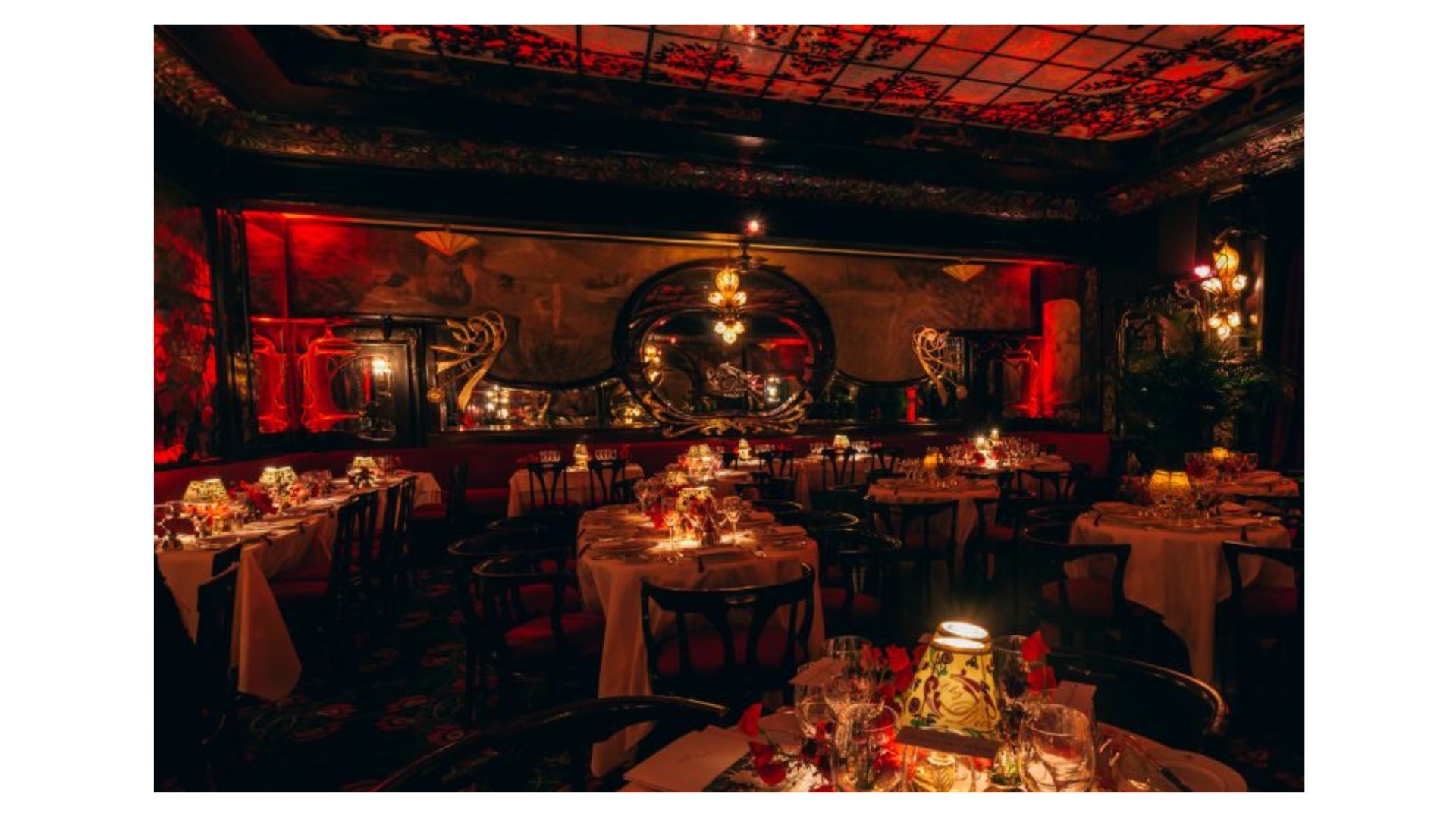
Ensconced in the green expanse of the gardens on the south side of the Champs-Elysées is the Pavillon Ledoyen. There has been a restaurant here since 1792. Now housed in the 1842 neo-classical pavilion are three restaurants run by one France’s most celebrated chefs. Alléno Paris is chef Yannick Alléno’s signature restaurant in the capital. With 3 Michelin stars, this reflects the very best that contemporary Parisian haute cuisine has to offer. L’Abysse (2 Michelin stars) features a modern take on Japanese tradition, and the Pavyllon Le Comptoir Gastronimique (1 Michelin star) offers unexpected twists and turns with fusions of Japanese, Italian and Nordic cuisines, with a distinctly Parisian sensibility. The collective 6 stars makes the Pavillon Ledoyen the most “starred” independent establishment in the world. For the foodie fanatics among you, this is practically a mandatory pilgrimage.
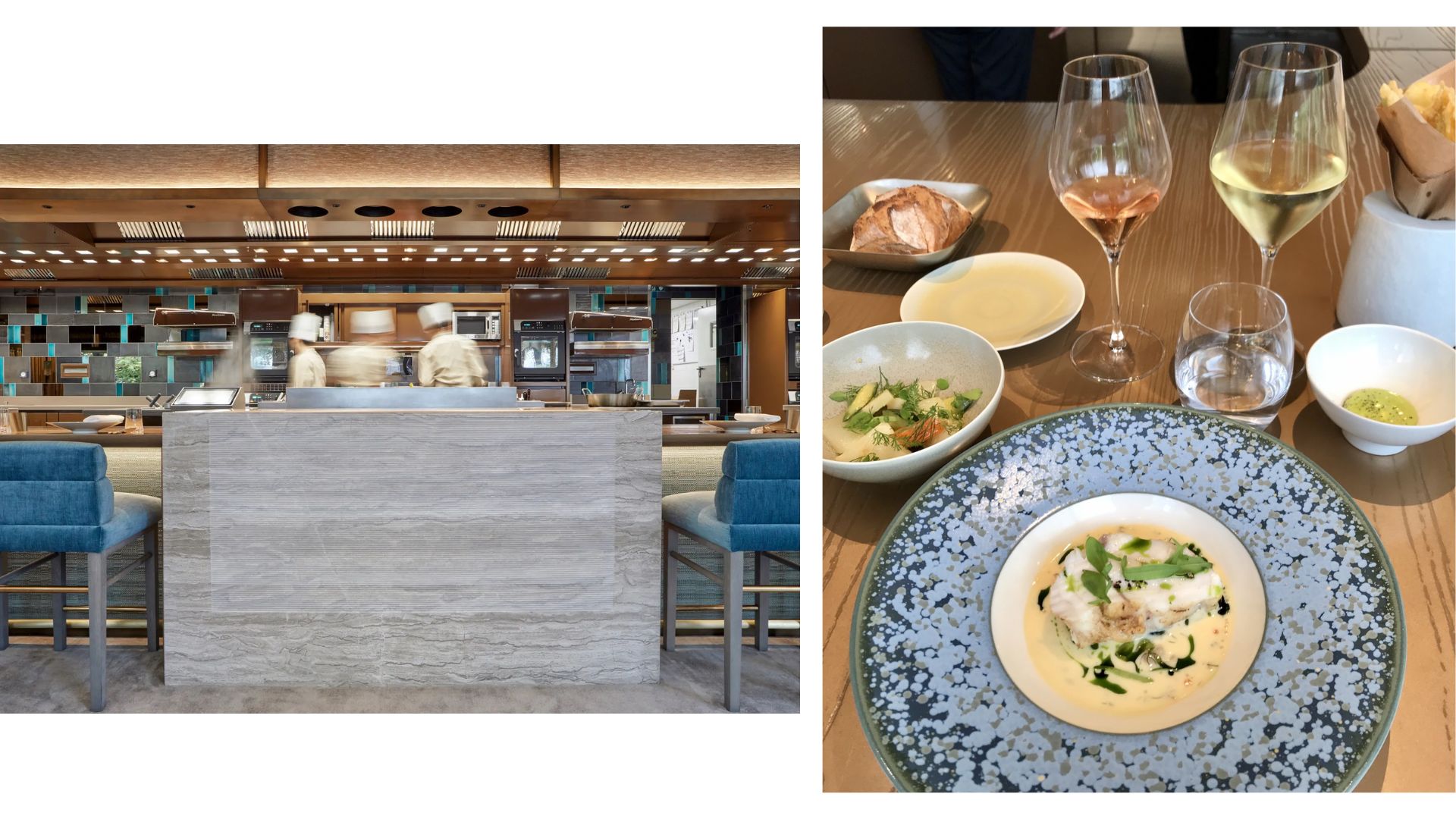
It’s not obvious because there’s so much greenery, but the Pavillon Ledoyen is directly behind the Petit Palais, which is directly across Avenue Winston Churchill from the Grand Palais, and both palais are nestled between the Champs-Elysées and the Pont Alexandre III, perhaps the most photogenic bridge in Paris. All were built in preparation for the 1900 Universal Exposition, or World’s Fair (the former term is used in most of Europe and Asia) to showcase the style and sophistication of the time, but also, and perhaps more importantly, the things of beauty that could be created by making use of the modern technology and techniques. Even if you decide not to explore the collections housed within (Paris’ Museum of Fine Arts in the Petit Palais and a temporary exhibits of great interest and import in the Grand Palais), it is worth a walk around to admire the elegance of the architecture. Be sure to snap a few selfies on the Pont Alexandre III, named in honor of the Russian Tsar. By the way, the Grand Palais will be hosting the Fencing and Tai Kwan Do events during the 2024 Paris Olympic Games!
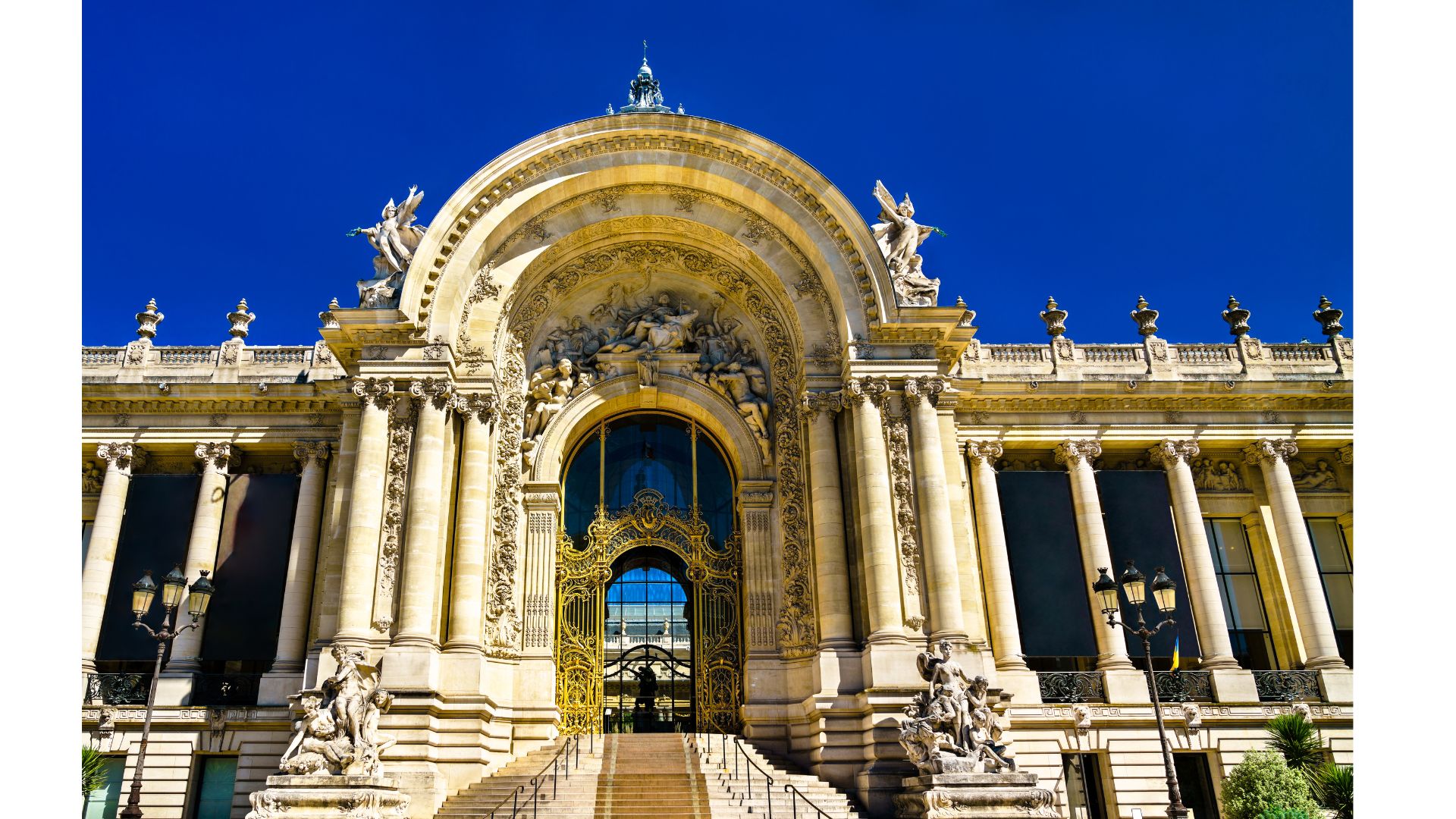
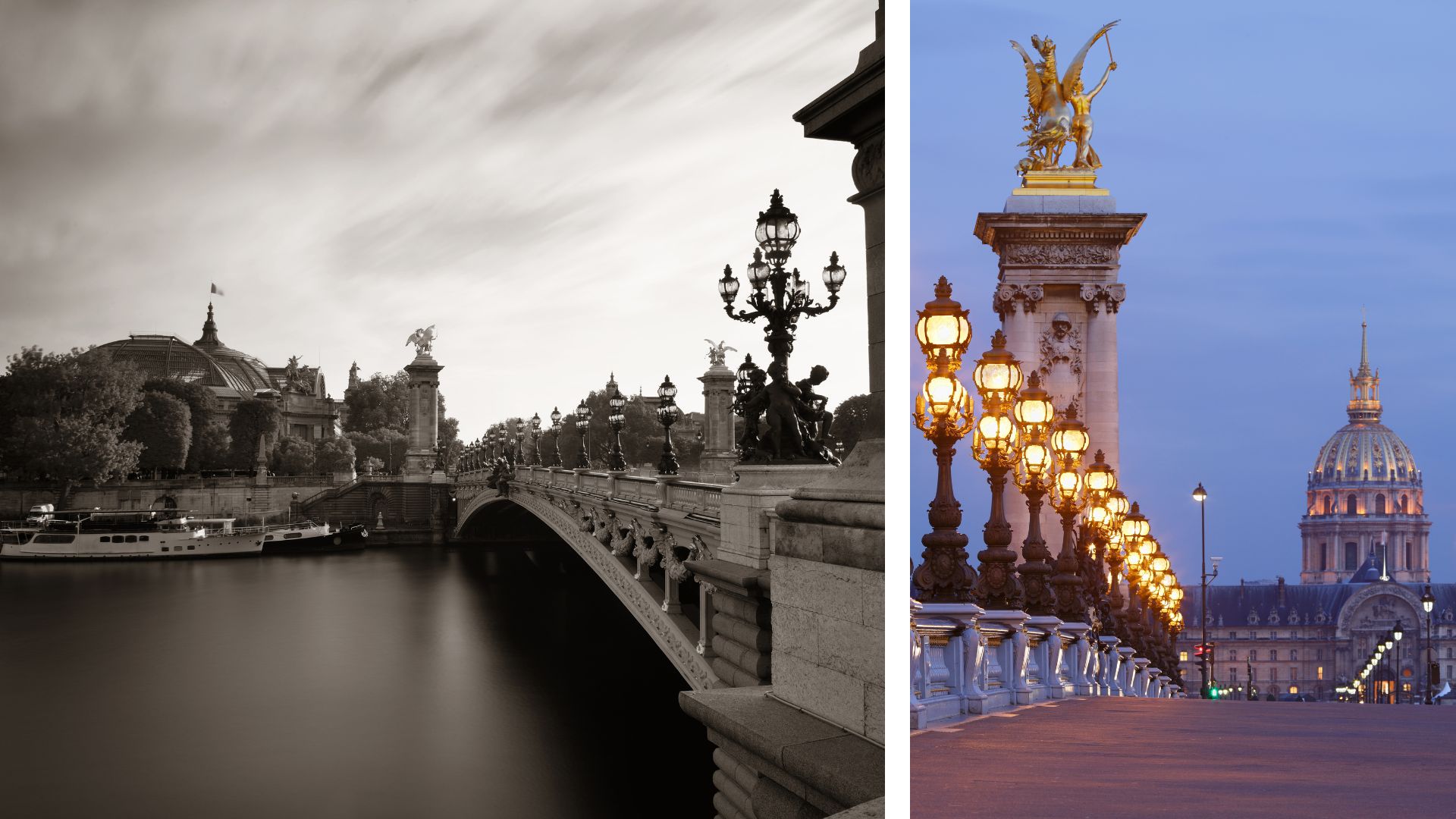
Once you’ve stood for a moment on the Pont Alexandre III for a few moments, soaking in the achingly romantic vistas, we suggest walking west on Cours la Reine, which runs along the riverside, up to the next bridge and the beginning of Rue François Ier. Just beyond the square of the same name you will find the Galérie Dior: an art museum, but unlike any that you have seen before, even if, following our suggestion in our last dispatch from Paris you have visited the nearby Yves Saint Laurent Museum. Similarly to that one, the Galérie Dior is housed in the building where the Maison Dior was born. In Dior’s own words, “When Maison Dior first opened, it had three Ateliers under the eaves of 30 Avenue Montaigne: a tiny studio, a salon in which to show the dresses, a cabine or dressing room for the models, an office, and six small fitting rooms.” This “refuge of the marvelous” is now a record, giving witness of the imagination and daring of Christian Dior and of those who have defined the Maison since his passing: Yves Saint Laurent, Marc Bohan, Gianfranco Ferré, John Galliano, Raf Simons, and Maria Grazia Chiuri. Walking these halls, ascending these stairways, is like dancing through a dream.
Practical information: 11, Rue François Ier. Open from 11:00 a.m. to 7:00 p.m. Last entrance at 5:30 p.m. Closed Tuesday.
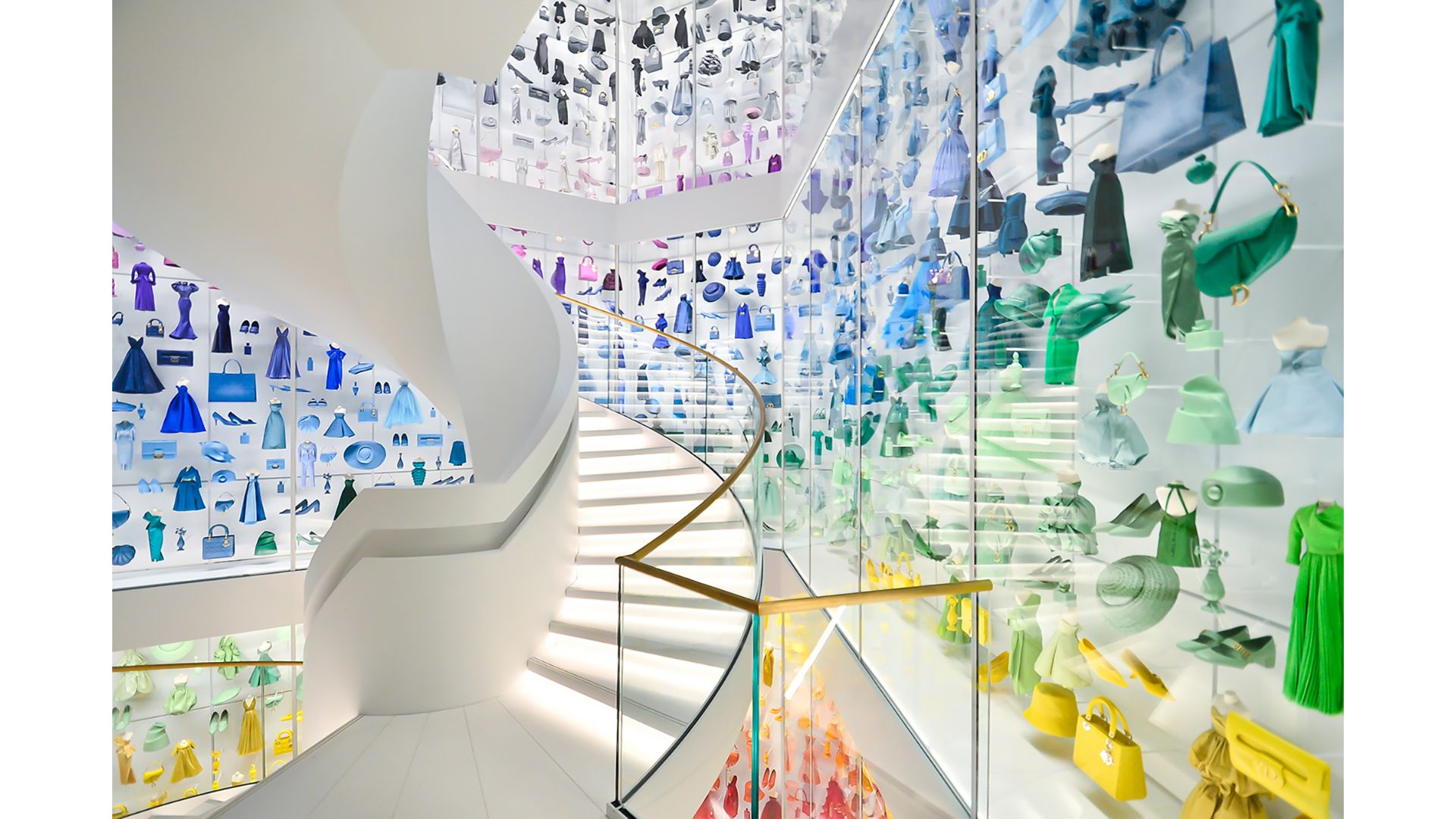
Continuing just 50 meters up the street, turn right on Avenue Montaigne. Oh, Avenue Montaigne, how we love thee! Like Rue du Faubourg Saint-Honoré on the north side of the Champs-Elysées, Avenue Montaigne is a paradise for shoppers, admirers and window-lickers alike. On the short stroll up Avenue Montaigne to the Champs-Elysées, you’ll pass Dior at number 30, on the left corner with Rue François Ier; Versace at number 45; Chanel at number 42 on the right and further up at number 51 on the left. Saint Laurent is at number 53, Dior again at number 48, Dolce & Gabbana at 54, Balenciaga at 57, and finally Gucci at number 60, adjoining the roundabout at this part of the Champs-Elysées.
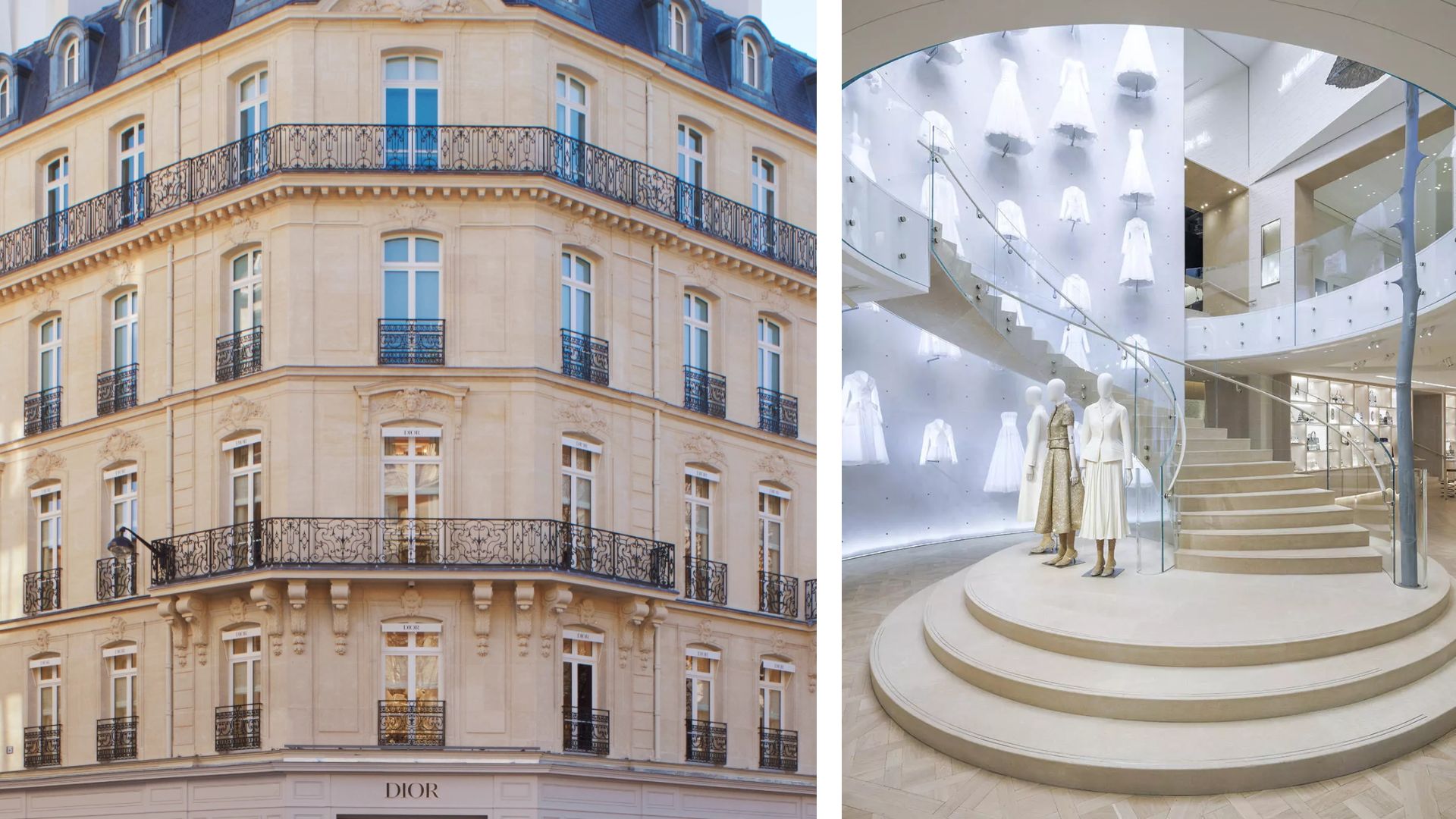
Bimbling up the boulevard in a northwesterly direction, take the time to just look around. Photos never do it justice. To appreciate it properly, as in so many things, you really do have to be there. There are people from all over the world, including people from right around the corner. If you watch for a moment, you’ll see that no one here ever seems to be in much of a hurry. On the Champs-Elysées, the journey truly is the destination. By this time, though, may be ready to set a spell and have something tasty to accompany your ogling and observing. Up ahead on the left, at number 75, is the place to go for true Parisian-style macarons. Ladurée has been in existence since 1862. Ernest Ladurée and his wife, Jeanne Souchard, gave birth to the concept of the Salon de Thé, or the Tea House, to Paris on the occasion of the 1900 World’s Fair. In 1930, pastry chef Pierre Desfontaines, the son of the founding Ladurée’s cousin, created the pastel-tinted macaron as it is known in Paris today: two naturally-flavored egg-white and almond flour meringue wafers, light as clouds, embracing a layer of ganache, jam, buttercream, custard, or frankly, any sinfully sensational element that a pastry chef can imagine. Have a few (or a few dozen) along with a spot of tea sitting in Ladurée’s readily recognizable glassed-in terrace. You’ll be sinning in style!
Practical information: Open every day from 8:00 a.m. to 9:30 p.m.
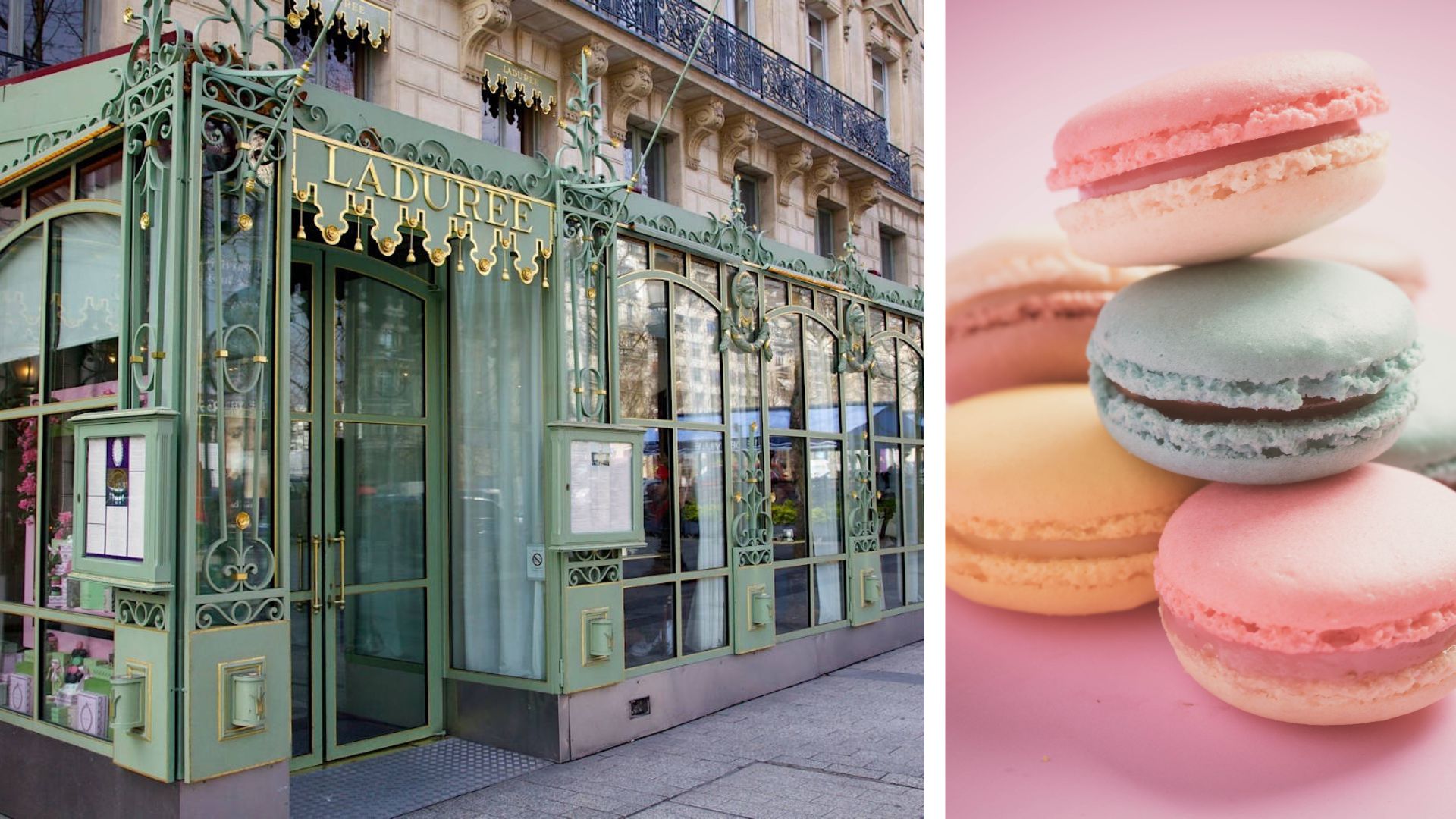
Stepping out of Ladurée back onto the wide walkway and head left toward the imposing edifice at the end of the street. Looming ahead is the enormous and inspiring Arc de Triomphe, one of the most recognizable structures on the planet. You can’t have come all this way and not take a few moments to admire it up close – perhaps even climbing the 284 stairs to the observation terrace on the top.
And speaking of terraces, on the south corner, where the Champs-Elysées and the Avenue Marceau meet the roundabout, there is the impossible-to-miss Publicis building. The company was born in 1926, when its founder, Marcel Blaustein-Blanchet was just 20 years old. Now one of the three largest communications groups in the world, Publicis has a fantastic reputation for taking very good care of their employees. And they take pretty good care of the Parisians as well! In 1958, Blaustein-Blanchet brought the concept of an American-style drugstore to France. On the ground floor of their building adjacent to the Arc de Triomphe, there is still today a drugstore (called Le Drugstore), offering everything from tobacco to toiletries, a pharmacy, a restaurant (two, in fact) and now even a cinema. After a devastating fire, the structure was completely rebuilt between 1973 and 1975, in the smoked glass and steel that was fashionable at the time. In 2004, new curved glass panels, with a distinctive deconstructionist flair, were added to the façade.
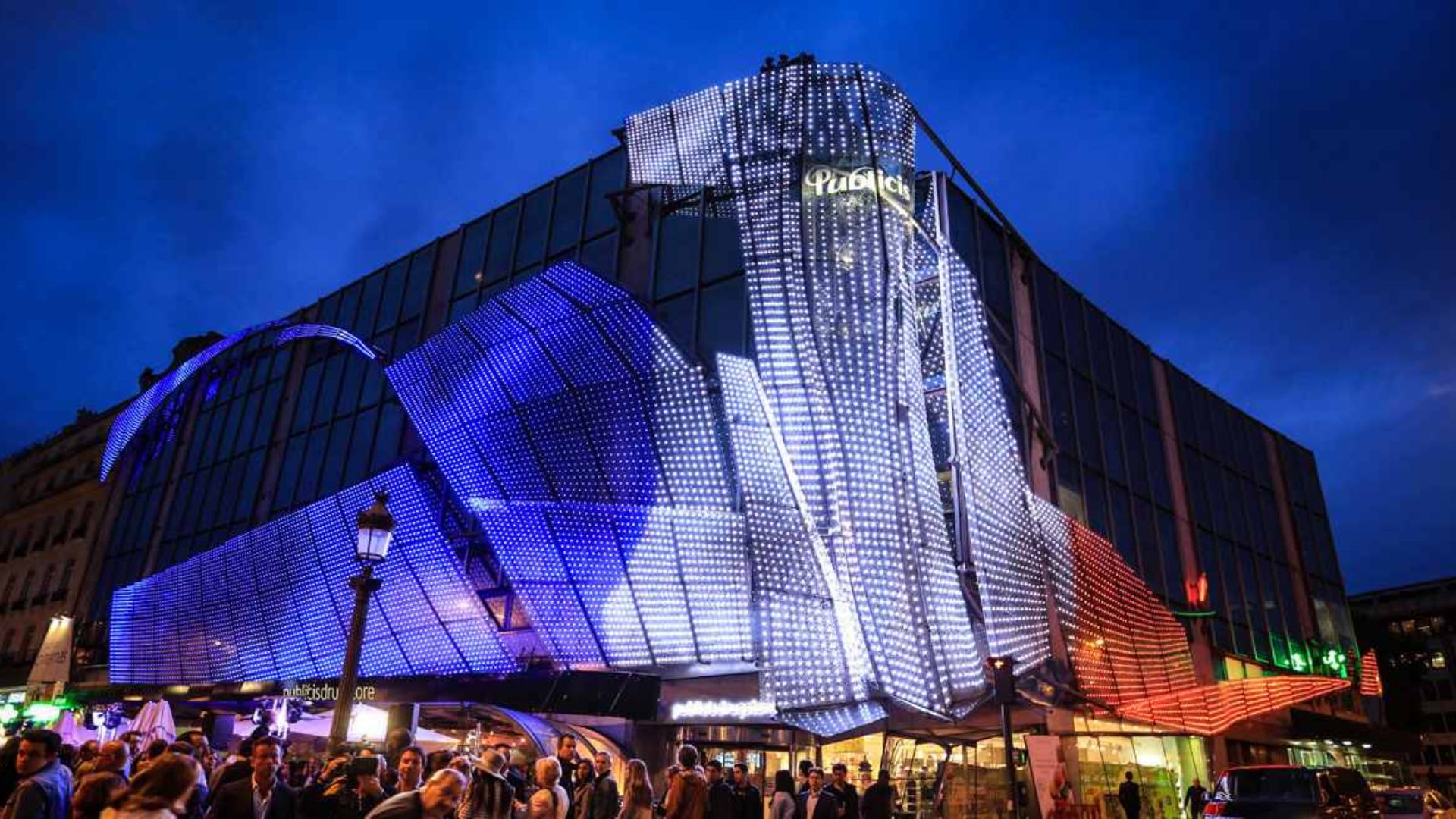
The drugstore restaurant (called Le Drugstore Restaurant – not to be confused with other fining establishment in the building, called L’Atelier) is popular with business people in the area on their lunchbreaks (long by American standards, but then the entire world’s lunchbreaks are long by American standards). We’ve been a number of times and know that you have to call ahead to reserve a table for lunch or you just won’t get in. The food runs from quick and casual to fine dining, but the prices are reasonable, considering the quality of the food and, well, location, location, location. Depending on what time you arrive, you may just be lucky enough to scoop up a table on the glass-covered terrace for an end-of-Champs-Elysées-stroll cocktail, with the Arc de Triomphe close enough to eavesdrop on your scintillating conversation!
